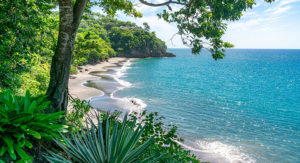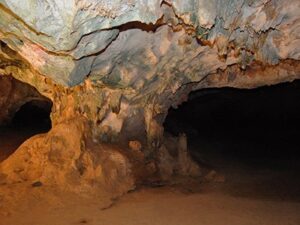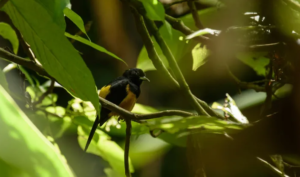This tiny island is one of the region’s best-kept secrets — its black sand beaches, coral reefs, soaring mountains and rainforest-covered hills, not to mention rare, endemic plant and animal species, make it a paradise for nature-lovers.
Montserrat — a dramatic island in the Caribbean dominated by the smoking Soufrière Hills volcano and home to an abundance of nature. Its small population (a little under 5,000), rare wildlife and paradisiacal setting make it the ideal getaway, and a new remote worker programme.
The island, which both the Native Americans and Carib Indians have called home, was uninhabited by the time Columbus sighted it in 1493 and named it after a Spanish abbey. In 1632, Irish Catholics from nearby St Kitts became the island’s earliest settlers, and this, together with its resemblance to the outline of Ireland, gave Montserrat the nickname ‘The Emerald Isle of the Caribbean’.
Here are the seven activities you shouldn’t miss when visiting this unique island:
Check out its sandy beaches

Little Bay Beach offers a highlight of any Caribbean coast: relaxed beach bars to while away the hours while dining on fresh fish, sipping on cocktails and watching the sun drop below the horizon. It remains the island’s most popular seaside enclave. Protected by craggy cliffs, this sweep of sand is perfect for a paddle. A little more seclusion can be found at Rendezvous Bay, Montserrat’s only white beach. It’s also an ideal spot for diving or snorkelling.
Hike the twitcher’s trail
The Montserrat oriole is a charming, yellow-bellied forest bird that lends its name to the Oriole Walkway Trail. During the course of this well-maintained, 1.3-mile-long hike, you’ll likely see and hear a variety of different birds and get an incredible view of the island from the top of Lawyers Mountain (at a height of just over 1,500ft). Keen birdwatchers should be sure to pack their binoculars.
Observe turtles laying their eggs
The black sand of Woodlands Bay Beach doesn’t just attract sunseekers, but turtles too. Leatherback, green, hawksbill and loggerhead turtles all lay their eggs here between April and September. The action takes place at night. The turtles dig chambers (which can take longer than an hour), into which they’ll deposit their eggs before returning to the sea. Things hot up from September when, following the nesting season, the tiny hatchlings begin to emerge.
Visit the Bat Cave

The Bat Cave at Rendezvous Bay is actually a pair of caves that are home to a colony of Antillean fruit-eating bats. One cave plays host to female bats and their offspring; in the other are the males of the species. The bats here can grow up to seven centimetres long at full maturity and are partial to a wide variety of snacks, from pollen to papaya. Make sure to book a tour guide before you visit to get the most out of this trip.
Discover rare species on a birdwatching tour
The forest reserve area of Centre Hills was, unlike the southern highlands, mostly unaffected by the worst of the volcanic eruptions of the 1990s. As well as the oriole, the island’s national bird that’s endemic to Montserrat, this area provides a welcome habitat to the Montserrat galliwasp (a type of lizard) and the confusingly-named mountain chicken, which is, in fact, a type of large frog. Amid the native forest, and steep, ghaut-covered terrain, other birdlife to keep watch for include bridled quail-doves, purple-throated caribs, Antillean crested hummingbirds and Caribbean elaenia.
Explore the botanic garden

The island’s botanic garden is overseen by the Montserrat National Trust. Spend an afternoon walking among aromatic and medicinal plants, and make sure to take a turn in the orchid house, where on display you’ll find orchids endemic to the islands’ hills.


